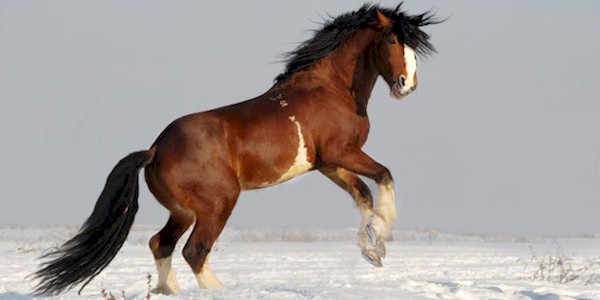Soviet Heavy Draft horses originated in Russia at the end of
the 19th century and became established by the 1940's. The need for a strong
but relatively fast draft horse breed was recognized in Russia during the
latter part of the 1800’s . The initial breeding took place at the Khrenov
stud, and from there expanded to the Pochinkozsk stud.
They were created by crossing native mares with imported
Belgian stallions. The native mares were a mix of Percheron, Ardennes, Suffolk
Punch, Danish and various saddle horse breeds.
By 1936, during the Soviet era, three state breeding centres
were established: Pochinkovsk, Mordovian and Gavrilovo-Posad. Alexandroz farm
in the Vladimir region and Yaroslavl farm branched off from Gavrilovo-Posad.
Later, the Pochinkovsk and the Mordovian facilities were transformed into
studs.
The breed was named and officially recognized as a heavy
draft breed in 1952. The same breeding techniques were used by the USSR to
create the Estonian Draft and Lithuanian Heavy Draft breeds. Soviet Heavy
Drafts are now the most common draft horse used in the nations that make up the
former Soviet Union, and they are frequently used in the improvement of other
heavy breeds, both on state-run farms and in kol-khozes (agricultural
cooperatives).
The selective breeding that created the Soviet Heavy Draft
resulted in a massively-built horse with free-moving gaits. The breed generally
stands around 15.1 hands high, and weighs 1,430 to 1,720 lb. They may be
chestnut, bay, or roan. The breed has a well-proportioned head with a straight
or convex profile, although with a pronounced jaw. The neck is usually short
and muscular, the chest wide and deep, the shoulders straight and powerful, the
back wide and strong, the croup muscular and sloping, and a rounded abdomen.
Their legs are short and sturdy with solid joints and hooves that are broad and
rounded. They are prone to pigeon toes in their front legs and sickle hocks in
the rear. The breed tends to mature quickly, but is also less resistant to
disease than some other heavy breeds.
